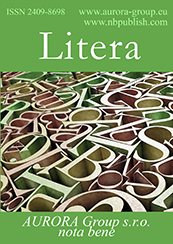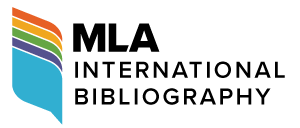Intertextuality
Reference:
Liu, X. (2023). The Attractiveness of the Multimedia Text of the TV Series "Symphonic Novel": Verbal-Nonverbal Ambivalence. Litera, 1, 1–10. https://doi.org/10.25136/2409-8698.2023.1.39422
Abstract:
Modern multimedia text has been widely studied from the point of view of its formation, but the role, place and significance of its individual components in the implementation of various functions has not yet been sufficiently studied. The article is devoted to the problem of the attractiveness of polycode multimedia text, which is formed in the content of the Chinese television series "Symphonic Novel". The author considers the specifics of the combination of oral verbal text, visual series and audio components in the multimedia text, in which various formats are used: the joint sound of verbal text and non-verbal elements (classical music, background soundtracks, nature sounds, etc.). The author believes that, in general, multimedia text becomes a potentially effective factor in the attractiveness of a television series, which makes it possible to evaluate it the image potential is very high. In the process of analyzing the multimedia text of the TV series, the author reaches the conclusion that thanks to classical music, the realization of both educational and influencing functions is enhanced, and the plot and the characters of the TV series become more attractive, and comes to understand that the realization of the category of attractiveness plays a fundamental role, since it is included in the illocutionary dominant (the main communicative super-task) media content, which consists in the widest possible coverage of the audience of the TV series "Symphonic Novel". Thus, the author proves that the attractiveness of the TV series is formed due to an ambivalent combination of verbal and nonverbal components with the leading role of the audio format.
Keywords:
soap opera, ambivalence, Symphonic Novel, media content, TV series, polycode format, multimedia text, attractiveness, media, media space
Communication
Reference:
Xu, M. (2023). The Role of Nonverbal Communication in A.P. Chekhov's Story "The Chameleon". Litera, 1, 11–19. https://doi.org/10.25136/2409-8698.2023.1.39558
Abstract:
A writer who creates a work of fiction, using non-verbal means, helps the reader to imagine his characters in the process of communication: to show their emotional state, character traits, attitude to other characters, etc. The article examines the role of nonverbal communication in a work of fiction using the example of A.P. Chekhov's story "Chameleon". Attention is paid to the analysis of those nonverbal means by which A.P. Chekhov implements the individual psychological and social characteristics of the character, reveals his attitude to other heroes. The object of the study is lexical units reflecting the components of nonverbal communication and their functioning in a literary text. The subject of the study was the linguistic means of describing various ways of displaying nonverbal behavior. The paper studies such nonverbal means as visual, tactile-kinesthetic and acoustic, examines how A.P. Chekhov, conveying the appearance of the hero, his gestures, facial expressions, body movements, sounds and intonation of the voice, reflected the inner world of the hero, his social role and attitude to other characters. The following research methods were used: the method of continuous sampling of nonverbal means from A.P. Chekhov's story "Chameleon", the method of analyzing dictionary definitions. The novelty of the work lies in the fact that it presents a functional analysis of nonverbal means of communication encountered in A.P. Chekhov's story "Chameleon", a study of how psychological and social characteristics of the hero are carried out with the help of nonverbal means, his attitude to other characters is revealed. Each of the functions of nonverbal means is accompanied by an example.
Keywords:
internal state, characteristics of characters, feelings, emotions, takesics, proxemics, kinesics, non-verbal communication, non-verbal means of communication, communication
Journalism
Reference:
Malakhovskaya, V.V., Solyanina, A.P. (2023). Film Reviews Dedicated to "Cinéma du Look" - High-Quality Russian Film Criticism (on the Example of the Magazines "Session" and "Art of Cinema"). Litera, 1, 20–34. https://doi.org/10.25136/2409-8698.2023.1.39533
Abstract:
The subject of the research is critical publications in the Russian editions "Session" and "The Art of Cinema", dedicated to the direction of French cinema "cinéma du look". The object of the study is the modern Russian mass media. The relevance of the article is determined by the need to study the state of modern Russian media professionally covering the problems of cinema, including its specific directions. The authors consider in detail the film reviews of two leading Russian professional magazines about cinema devoted to the direction of French cinema "cinéma du look", which significantly influenced not only cinema, but also reflected in the fashion industry and video production.The scientific novelty of this study is determined by the choice of materials about "cinéma du look" as the object of research. The main contribution of the authors to the research of the topic is a complete sample for the purpose of content analysis of all materials of the 1990s-2000s. magazines "Session" and "Art of Cinema" dedicated to "cinéma du look". As a result of the conducted research, the authors came to the conclusion that "The Session" and "The Art of Cinema" retain their reputation as highly professional magazines about cinema, find a place for serious reviews of such a specific direction of French cinema as "cinéma du look". In general, both magazines positively assess this cinematic direction, noting its contribution to the development of modern commercial and author's cinema.
Keywords:
film critics, visual range, triumvirate, French film directors, reviews, Iskusstvo kino, Seans, cinema du look, publication, information space
Literary criticism
Reference:
Xuejing, W. (2023). A. Arbuzov's play "My Poor Marat" on the modern Chinese stage: the problem of reception. Litera, 1, 35–44. https://doi.org/10.25136/2409-8698.2023.1.37554
Abstract:
The author examines in detail the reception of Arbuzov's play "My Poor Marat" on the Chinese stage since 2000, analyzes the opinions of critics and audience reactions, as well as other types of responses to this dramatic text in modern Chinese culture. The problem of perception of the Russian dramaturgy of the twentieth century in China is raised on the material of the modern Chinese artistic and critical reception of Alexey Arbuzov's play "My Poor Marat" (1964). The work of Alexey Arbuzov, one of the most sought-after Soviet playwrights on the world stage, is the main subject of research. The play of this playwright "My Poor Marat" has been repeatedly staged in Chinese theaters, and in 2021 it again proved to be in demand by theatrical figures and the audience, which indicates the relevance of this study. The scientific novelty of the research consists in the fact that the work has studied the most popular performances of "My Poor Marat" in China since 2000, as well as an art exhibition based on the play. The practical significance of the results obtained is that their analysis reflects the dynamics of the development of Chinese society, changes in mentality, dominant themes of the time, dialogue with other cultures and various aesthetic systems, the specifics of theatrical life and the theatrical market in the country. The conclusion is made that the stage reception of Russian drama in China is closely connected with the socio-political aspect of the country's life and national mentality, affects the official ideology and individual consciousness, reflects the dialogue of foreign cultural factors and traditional forms of national culture.
Keywords:
Arbuzov, My Poor Marat, Reception, Staging, Drama in China, Dialogue of cultures, Dialogue of the arts, Reception aesthetics, Survivor syndrome, Anachronism
Literary criticism
Reference:
Anisimova, O.V., Makarova, I. (2023). Mythopoetics of Literature: a Symbolic Language of British and American Fantasy and Science Fiction. Litera, 1, 45–56. https://doi.org/10.25136/2409-8698.2023.1.39451
Abstract:
The paper deals with the study of peculiarities of mythopoetics inclusion in British and American literatures. In particular, it highlights the specificity of the way English-speaking writers refer to such mythopoetic images as tree, raven and dragon. The study is done on the works by famous fantasy and sci-fi writers: John Ronald Reuell Tolkien, Roger Zelazny, Jack Vance and George Martin. A wide range of writings in various genres of literature brings certain difficulties connected with the selection of the study material. The criteria applied to fictional texts selected for the undertaken research are as follows: the degree of influence of a particular writer, the significance of mythologemes under consideration in terms of a particular text, and their level of reinterpretation in the writings of selected novelists. The novelty of a given research is connected with considering selected mythopoetic images in the context of particular examples of British and American fantasy and science fiction never regarded together before. The research findings highlight two leading directions of English-language literatures references to the world mythopoetic heritage of ancient times. Firstly, we see the way such mythologemes as tree, raven and dragon are interwoven in the fictional discourse to create a medieval atmosphere; secondly, writers incorporate archetypical images into their texts as elements of their own myth. The second direction seems to be more promising for it results in new interpretations of classical images rather than their exploitation in new texts, thus encouraging the expansion of their symbolic content.
Keywords:
fantastic literature, dragon, snake, raven, tree, British and American fiction, symbolism, science fiction, fantasy, mythopoetics
Linguistics
Reference:
Kartavova, P. (2023). Analysis of the translation of constructions such as "If the disease is not treated" into English. Litera, 1, 57–68. https://doi.org/10.25136/2409-8698.2023.1.36652
Abstract:
The subject is the strategies of text reduction in the Russian-English translation of the construction of the type "If the disease is not treated". The purpose of the work is to identify relevant strategies for text reduction in the Russian-English translation of this structure. At the first stage, the analysis of textbooks on translation and textbooks of English grammar was carried out, after which an empirical base of research was created – examples of the translation of this syntactic model from the NCRE were selected. At the next stage of the study, the translation of examples from a parallel subcorpus is analyzed, as a result of which the main strategies of the Russian-English translation of the structure are identified. Then the search for examples of the studied design was carried out on the website of the President of Russia. At the last stage, more than 30 hours of official speeches of Russian politicians and their interpretation into English were analyzed. The study showed that this structure is not considered in translation textbooks, Google Translate does not recognize the "If the disease is not treated" construction in most cases, and that translators almost do not use the "If untreated" model in translation. The novelty of the study is that the Russian-English translation of structures of the type If the disease is not treated is considered in the work for the first time. The results of the study make it possible to study translation strategies and identified text reduction strategies when translating this syntactic model. The results of the research work can be used in writing term papers, final qualifying papers and master's theses on related problems.
Keywords:
translation, machine translation, written translation, Google Translate, syntactic construction, Russian National Corpus, reduction, correlate, predicative construction, search engine
Linguistics
Reference:
Barebina, N.S., Glyzina, V.E., Leontyev, A.A., Maksimova, N.V. (2023). The Study of Methods and Means of Intensity in Alarmist Discourses. Litera, 1, 69–77. https://doi.org/10.25136/2409-8698.2023.1.39578
Abstract:
The object of the study is linguistic facts in the form of a corpus of intensifiers functioning in modern Russian and English during the discussion of agendas related to the unstable situation in a particular sphere of society. The subject of this study is the semantic and grammatical structure of units functioning within the category of intensity. The authors consider in detail such an aspect of the topic as intensity and expressiveness in language, in this regard, an overview of the relevant works is given. Particular attention is paid to various linguistic ways of expressing the degree of intensification of meaning and the gradality of negative meaning. The data of disciplines related to the science of language on the practices of alarm broadcasting, the topics of alarmist agendas are also presented. The modern context supplies us with all new social practices that attract close attention from scientists investigating the mechanisms of influence on groups and masses of people. One of these phenomena was the spread of alarmist discourses that broadcast a state of increased anxiety or panic. These discourses, largely due to the network morphology of modern society, imperceptibly and uncontrollably enter the life of a modern person. Their systematic study by linguistic analysis has not yet been undertaken. At the same time, there are all prerequisites to consider which language mechanisms are involved in the formation of alarmist discourses in the aspect of speech intensification, which makes it different from the logical-rational content. The article argues the timeliness of studying the mechanisms and techniques of actualization of alarmism in connection with the possibility of monitoring the indicators of the latter. It is established that intensifiers, being the opposite of the rational mode of messages, serve as markers of alarmist discourses. Methods of phraseological analysis and description, an interpretive method for interpreting intensifiers in their connections and relationships were used, techniques for describing innovations in discursive practices according to O. S. Issers were used.
Keywords:
phraseological meaning, markers, rationality, phraseology, alarmism, discourse, intensifier, expressiveness, intensity, impact
Character in literature
Reference:
Shagbanova, K.S. (2023). Semantics of the Concept "Yard" in the Work of A.I. Solzhenitsyn "Matrenin Yard". Litera, 1, 78–86. https://doi.org/10.25136/2409-8698.2023.1.39577
Abstract:
The article presents an analysis of the concept of "yard" based on the material of A.I. Solzhenitsyn's story "Matrenin Yard". The problem of studying the logical and semantic content of the studied language unit is complicated by its multicomponent content, through which the author of the work forms the depth of the storyline. The concept "yard" functions mainly as a space reflecting the system of spiritual and moral values of Matryona Vasilyevna, her life priorities and principles: charity, mutual assistance, humility and modesty. In the work, the semantics of the concept "yard" is represented by two components – material and spiritual; as a semantic unity, the lexeme yard states the importance of concentrating spiritual life, the ability not to respond with rudeness to rudeness, to find strength to overcome difficulties. Matryona's yard is a reflection of the spiritual disposition of its mistress: it has lost its external splendor, has aged, faded and rotted in places, but is filled with an atmosphere of peace and silence. The main character of the story embodies the best features of patriarchal Russia, such important moral qualities as kindness, humanity, non-possessiveness. The master brings to the thoughtful reader the idea that Matryona, who gives herself to others without a trace, and "... is ... the very righteous man, without whom ... the village is not worth it. No city. Not the whole earth is ours."
Keywords:
storyline, inner world of the character, Matryona's yard, linguoculturology, lexical meaning, semantic transition, semantics, concept, village prose, Alexander Solzhenitsyn
Didactics
Reference:
Asadi Sangachin, Z., Sheikhi Jolandan, N., Valipur, A. (2023). Analysis of the Russian-Persian translation training program in Iran and ways to overcome existing problems . Litera, 1, 87–95. https://doi.org/10.25136/2409-8698.2023.1.37292
Read the article
First Peer Review:
Second Peer Review:
Third Peer Review:
|
EDN: GLLRAJ

|
Abstract:
This article discusses the problems of teaching translation from Russian to Persian and back at Iranian universities, compares the program of Iranian audiences with the program of translation training in some leading countries of the world. The characteristic features of the translation training system in different countries are highlighted and described, from which it is possible to characterize the shortcomings of translation training in Iran. The purpose of the article is to study the existing shortcomings of translation training in Iran and ways to solve the problems outlined. The author pays special attention to the theory of translation and the basics of translation didactics, which help to find problems in the translation training program. The novelty of this article is that the problem of the translation training program from Russian into Persian has never been studied, and basically the issue of translation training in Iran has been little studied and requires further research. The results of this article are applied in connection with the improvement of the translation training system and, finally, the increase in the quality of translation. In conclusion, it is revealed that all the shortcomings of translation training in Iran arise from the use of non-modern methods of education of translators. The old method of teaching translation and ignoring the basics of the theory and didactics of translation are the reasons for the shortcomings in the translation training program in Iran.
Keywords:
translation, teaching, translation studies, disadvantages, translator, method, didactics, Russian language, Persian language, training program
Semantics
Reference:
Dzhguburiya, K.K. (2023). Features of the semantics of adjectives of color in the Russian and English language picture of the world: the problem of translation. Litera, 1, 96–104. https://doi.org/10.25136/2409-8698.2023.1.37052
Abstract:
This research work is carried out within the framework of the cognitive-discursive paradigm and is devoted to the analysis of the features of the semantics of adjectives of color in natural language and the identification of translation problems that translators may face. Description of the semantics of language units allows you to reproduce how colors are understood in the Russian and English worldview. The subject of the study is the peculiarities of the semantics of adjectives of color designation and possible problems in the translation of units characterizing color: "red", "orange", "yellow", "green", "blue", "blue", "purple", "white", "black". The study is based on the data of lexicographic articles and bilingual text corpora. The research method was a component analysis based on lexicographic descriptions. The scientific novelty of the research lies in the use of a new methodology that relies on the rich material of digital technologies. A refined idea of the nature of conceptualization and verbalization of the color spectrum in English and Russian is obtained; a more complete description of the semantics of the studied units and the differences in their perception and verbalization in the two linguistic worldviews. The main conclusions of this study are to determine the ways of verbalization of the color spectrum in two linguistic pictures of the world and to highlight problems in the transmission of adjectives of color meanings. When translating the units characterizing color from English into Russian, there is a discrepancy in the names of shades, which is a problem for the transmission of the color spectrum. Russian terminological combinations often correspond to English terminological correlates that preserve the semantic element that introduces information about color. When translating phraseological combinations, there is an "unfolding" of the semantics of expression using structural and lexical substitutions. Russian Russian phraseological units and the discrepancy between the shade of color in the Russian and English language picture of the world when translated from English into Russian were highlighted as the most frequent difficulties in the transmission of color meanings.
Keywords:
adjectives, colour adjectives, semantics, linguistic worldview, phrases, terms, translation, comparing linguistic worldviews, colour worldview, colour terms
 This work is licensed under a Creative Commons Attribution-NonCommercial 4.0 International License.
This work is licensed under a Creative Commons Attribution-NonCommercial 4.0 International License.
 Eng
Eng













 © 1998 – 2025 Nota Bene. Publishing Technologies. NB-Media Ltd.
© 1998 – 2025 Nota Bene. Publishing Technologies. NB-Media Ltd.




